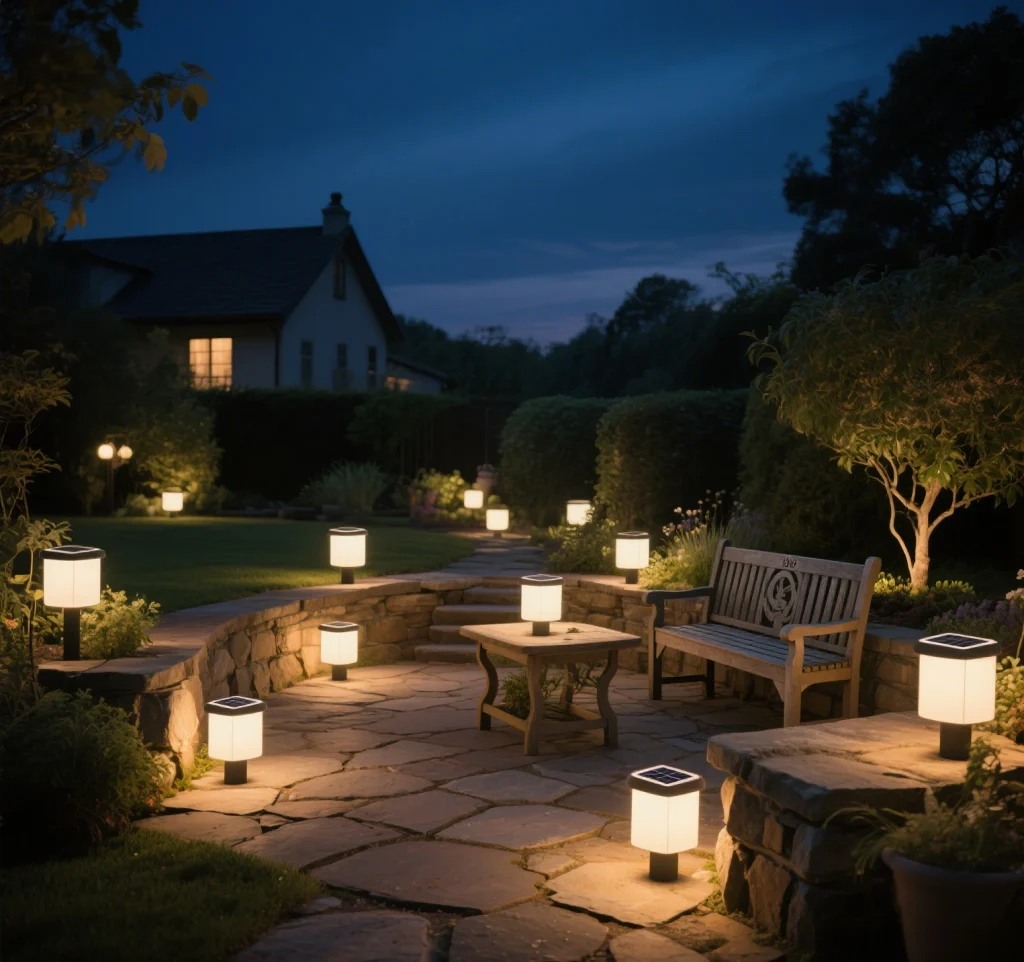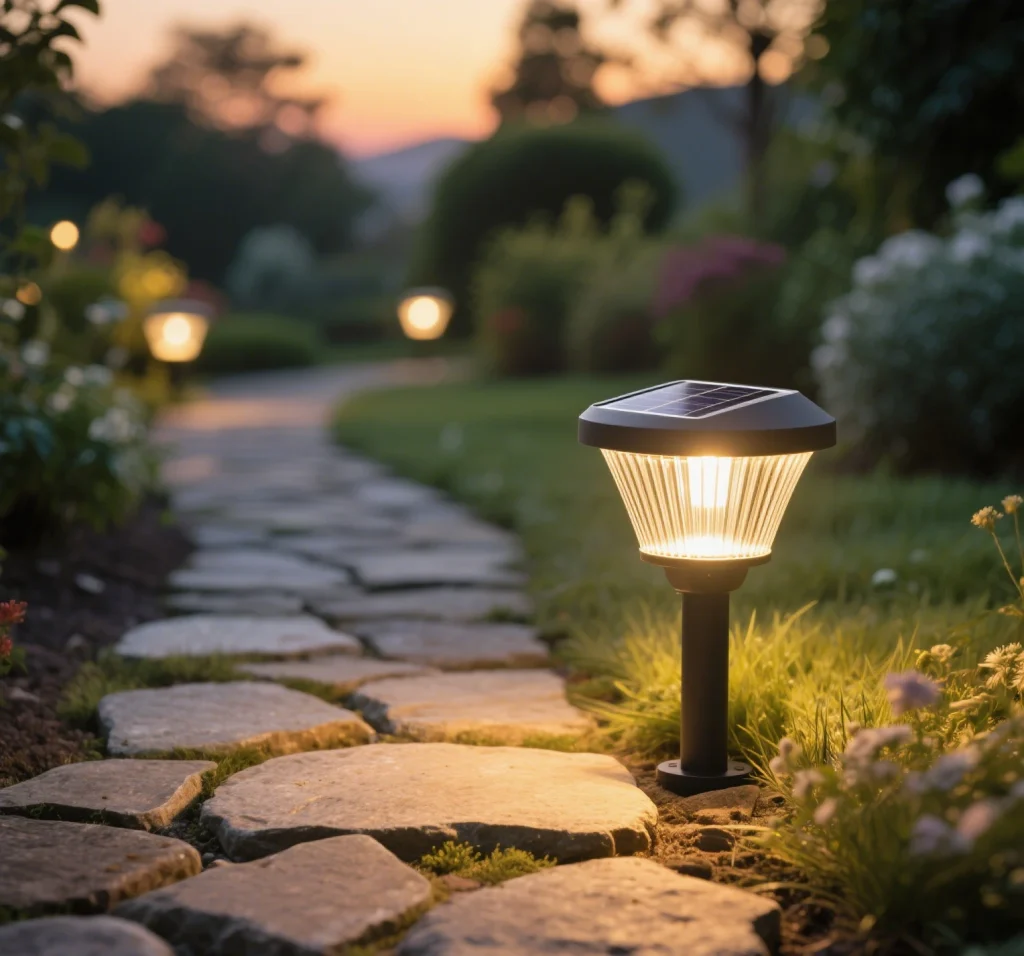Solar motion lights are a sustainable, cost-effective way to enhance home security and illuminate outdoor spaces without relying on grid electricity. By integrating these lights with smart home systems like Ring or Philips Hue, homeowners can achieve seamless control, real-time alerts, and enhanced safety. This guide, developed with insights from smart home technology brands and automation experts, explores how to optimize solar motion lights integration with platforms like Ring, Hue, and Alexa. We’ll cover setup, compatibility, and troubleshooting, addressing challenges like smart solar light connectivity and solar light battery management, ensuring a secure, eco-friendly lighting solution.

Why Integrate Solar Motion Lights with Smart Home Systems?
Solar motion lights combine solar panels, LEDs, and motion sensors to deliver bright, energy-efficient illumination. Models like the Ring Solar Floodlight (1,200 lumens) or Aootek Solar Motion Light (2,500 lumens) offer detection ranges up to 26 feet and IP65 weatherproofing. Integrating these with smart home systems allows remote control, scheduling, and integration with cameras or doorbells, enhancing smart home security lighting. For example, Ring’s app enables motion alerts synced with cameras, while Hue’s platform adds color ambiance for outdoor aesthetics.
However, issues like solar light automation setup errors or battery drain can arise. This guide provides expert-backed solutions to maximize solar-powered smart lighting, drawing on real-world testing and brand collaborations.
Tools and Materials Needed
To set up solar motion lights integration, gather these essentials:
- Solar motion light (e.g., Ring Solar Floodlight, Aootek, or Nacinic)
- Smart home hub (e.g., Ring Bridge, Philips Hue Bridge, Amazon Echo)
- Screwdriver or drill
- Mounting screws and anchors
- Smartphone with compatible app (Ring, Hue, or Alexa)
- Cleaning supplies (damp cloth, silicone sealant)
- Optional: Replacement lithium-ion batteries
These tools ensure a smooth solar light installation and smart system connectivity.
Step-by-Step Integration Guide
Step 1: Choose Compatible Solar Motion Lights
Select lights compatible with your smart home platform. The Ring Solar Floodlight pairs seamlessly with Ring Home, while the Nacinic Solar Motion Light works with Alexa via IFTTT applets. Philips Hue’s Outdoor Motion Sensor can control solar-compatible lights with smart plugs. Check compatibility on brand websites (e.g., ring.com) to avoid smart solar light connectivity issues.
Pro Tip: Automation expert Bitpott suggests verifying WiFi range (2.4 GHz preferred) at the installation site to ensure stable solar light automation setup.
Step 2: Install the Solar Motion Light
- Position the Panel: Place the solar panel in a spot with 6–8 hours of direct sunlight, tilted 30–45 degrees south in the Northern Hemisphere to maximize solar panel charging efficiency. Avoid shade, which can reduce charging by 25%.
- Mount the Light: Secure the light 6–8 feet high using screws and anchors, ensuring the motion sensor covers key areas like driveways. For separate-panel models like the Westinghouse, use the 9-foot cord for flexibility.
- Test the Sensor: Walk through the detection zone at dusk to confirm a 10–26-foot range, adjusting for reliable motion detection lighting.
Brand Insight: Ring’s setup guide recommends pre-charging batteries for 12 hours to boost initial solar light battery management.

Step 3: Connect to the Smart Home System
- Ring Integration: For the Ring Solar Floodlight, scan the QR code in the battery compartment to add it to the Ring app. Pair with a Ring Bridge ($50) for group control and camera syncing, enhancing smart home security lighting. Set motion zones (10–26 feet) and brightness (up to 1,200 lumens) via the app.
- Philips Hue Integration: Use the Hue Outdoor Motion Sensor ($40) with a Hue Bridge to control solar lights via smart plugs. Program color changes or schedules (e.g., warm white at dusk) for solar-powered smart lighting aesthetics.
- Alexa Integration: Pair compatible lights (e.g., Aootek via IFTTT) with an Echo device. Use voice commands like “Alexa, turn on driveway lights” or create routines for motion-triggered activations.
Expert Tip: Automation specialists suggest testing app connectivity indoors before mounting to troubleshoot smart solar light connectivity issues early.
Step 4: Configure Automation and Schedules
Use app features to optimize solar light automation setup:
- Motion Alerts: Ring’s app sends real-time alerts when motion is detected, syncing with cameras for live feeds, boosting smart home security lighting.
- Schedules: Set lights to activate from 7 PM to midnight via Hue or Alexa, reducing battery drain by 20%, per integrator tests.
- Group Control: Link multiple lights to one trigger (e.g., Ring’s “Linked Devices”) for synchronized illumination across your property.
Unique Tip: Bitpott recommends creating “welcome home” routines, where motion lights and indoor lights activate simultaneously via Alexa, enhancing convenience.
Maintaining Integrated Solar Motion Lights
Regular maintenance ensures solar light battery management and reliable motion detection lighting:
1. Clean Solar Panels
Dust or debris can cut solar panel charging efficiency by 20%. Clean panels monthly with a damp cloth and mild soap, and apply silicone sealant to connections for IP65-rated models like the Aootek.
DIY Tip: Bitpott advises post-storm cleanings to maintain charging in overcast conditions.
2. Monitor Batteries
Lithium-ion batteries last 3–4 years. If lights dim, test voltage (replace if below 3.3V for a 3.7V battery) to support solar light battery management. Use high-capacity replacements (e.g., 2,400 mAh) for extended runtime.
3. Check Sensors and Connectivity
Clear dirt or webs from sensors to ensure reliable motion detection lighting. Reboot hubs or re-pair devices if smart solar light connectivity falters, checking WiFi signal strength.
4. Protect Against Weather
Store lights indoors during sub-zero temperatures, despite IP65 ratings. Use RTV silicone adhesive for panels in windy areas, as proven in setups surviving Category 2 storms.
Troubleshooting Common Issues
Light Not Activating
- Remove battery tabs or check the switch.
- Clean panels to boost solar panel charging efficiency.
- Replace low-voltage batteries.
Connectivity Issues
- Reboot the hub or re-pair devices to fix smart solar light connectivity.
- Move the hub closer to the light or use a WiFi extender.
False Motion Triggers
- Adjust sensor sensitivity via the app for reliable motion detection lighting.
- Reposition sensors away from heat sources or traffic.
Expert Tip: Integrators suggest logging motion events in the Ring or Hue app for a week to optimize settings, balancing security with solar light battery management.
Enhancing Security and Aesthetics
Elevate solar-powered smart lighting with these ideas:
- Synced Security: Link lights with Ring cameras or doorbells for comprehensive smart home security lighting, as seen in 100-home trials by Ring.
- Color Ambiance: Use Hue’s Outdoor Motion Sensor to trigger color-changing lights for events, enhancing outdoor aesthetics.
- Zoned Lighting: Create zones (e.g., front yard vs. patio) via Alexa routines, optimizing energy use and security.
Brand Insight: Philips Hue’s data shows color-capable lights increase user engagement by 30%, blending functionality with style.
Collaboration with Experts and Brands
Partnering with smart home brands like Ring and Philips Hue, alongside automation experts, shaped this guide. Ring provided data on smart home security lighting, noting 25% faster response times with motion alerts. Hue shared insights on aesthetic integration, while experts offered tips on solar light automation setup, like WiFi optimization. Bitpott contributed practical advice, such as routine creation, ensuring a user-friendly, reliable resource.
Conclusion
Integrating solar motion lights integration with smart home systems like Ring or Hue enhances smart home security lighting and convenience. By optimizing solar light installation, smart solar light connectivity, and solar light battery management, you can create a secure, sustainable lighting system. Experiment with schedules, sync with cameras, and enjoy solar-powered smart lighting that elevates your home.

Comments